OAH & Intervention for the Privileged Few
April 21st, 2017

This is about public participation, something that is ostensibly encouraged by the Minnesota Public Utilities Commission. My take on this is that OAH’s modus operandi is the previous, yet unacted upon, Draft Rules for Minn. Rules Ch. 1400 & 1405, in which public participation was proposed to be severely limited:
I’d filed a Rulemaking Petition ages ago, circa 2011, after raising issues over and over and over and over and over and over and over and over again at Power Plant Siting Act Annual Hearings:
The OAH page regarding this 2012 rulemaking Notice, the Draft, and the several Comments received has been disappeared. Hmmmmmmm…
Anyway, as noted before, OAH has been limiting interventions for a while now. See Rate cases, rate design, and intervention for the privileged few…
Here’s a few posts of my current experience with No CapX 2020 intervention in Xcel’s rate case docket:
More Denial of Intervention in Xcel Rate Case May 3rd, 2016
2nd Petition for Intervention in Xcel Rate Case January 25th, 2016
Rate Case – Response filed to Xcel’s Objection to Intervention January 6th, 2016
And now it’s also happened to both CUB Minnesota and AARP in the Minnesota Power rate case docket!
When I saw those denials, I quick whipped off a comment and filed it the Xcel Energy Rate Case (15-826) and Alternative Rate Design (15-662) and Minnesota Power Rate Case (16-664) dockets.
To review these dockets, GO HERE and look up the docket numbers.
And now AARP has filed for Reconsideration. GOOD!
Very well put, AARP! For example:

And:

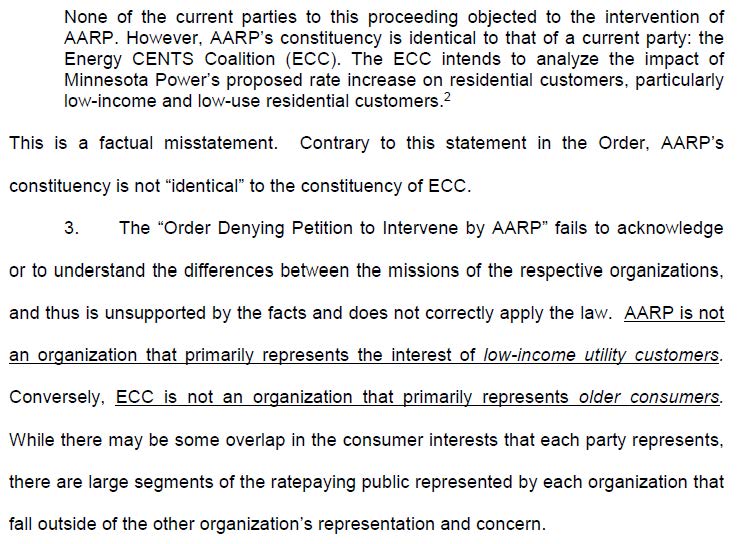
How could these parties interests be deemed identical? That’s as absurd as ALJ Mihalchik’s claim that the interests of those I represented in the Big Stone II docket were “adequately represented” by the “Clean Energy Intervenors.”
But here’s an important point:
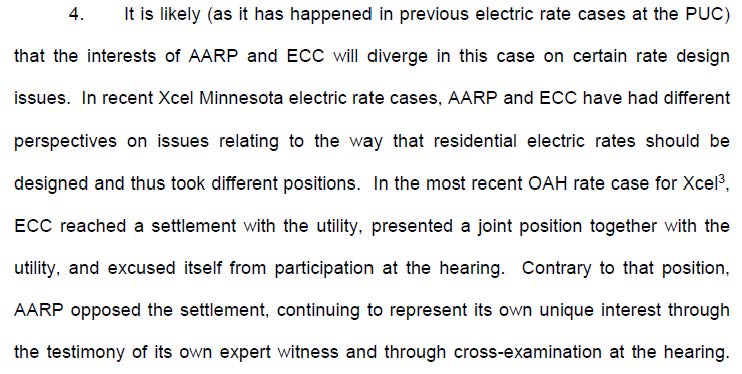
In another docket, the Xcel Energy rate case, there was a “Settlement Agreement” by many parties, and in that rate case docket (15-826) it was those who had participated in the e21_Initiative who “agreed,” and AARP did NOT agree.
How much is this prior objection to the Xcel Energy rate case agreement related to the current denial of intervention? Methinks quite a bit…
Do take the time to read this entire AARP Motion for Reconsideration.
Rate cases, rate design, and intervention for the privileged few…
April 19th, 2017
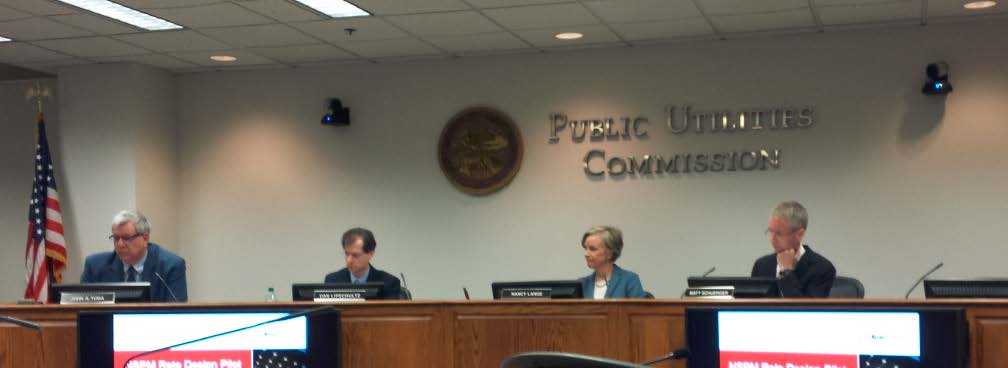
UPDATE – April 19: Now there’s a Notice 0f Comment Period:

Comments are due by May 15 — see Notice 0f Comment Period for particulars.
Last Tuesday, there was an “Informational Meeting” where Xcel Energy was allowed to present its plan for an “Alternate Rate Design” to the Commission. Nevermind that there is an “Alternate Rate Design” PUC Docket 15-662 and there’s an ongoing rate case right now, PUC Docket 15-826. No, Xcel gets to circumvent all that, and get special time before the Commission.
The Office of the Attorney General registered a complaint, raised some pertinent questions (OAG-RUD_Letter_20174-130495-01) and asked that the meeting be cancelled:

Pretty simple concept, but noooooo… the meeting went forward. And Chair Lange’s position was that we’d deal with the Attorney General’s Office’s objections AFTER the presentation by Xcel — it was absurd.
At the outset, I jumped in and requested that Chair Lange and Commissioner Schuerger recuse themselves due to their work in putting together Xcel’s e21 Initiative:

Here’s the full post with background on that:
Well, that request to recuse went over like a lead balloon…
And when “discussing” this with the Asst. A.G., one Commissioner said, essentially, “Well, Xcel Energy will file its proposal, a docket will be opened, and you can just intervene in that docket.” NOPE, no way, that’s not how it works, intervention is NOT to be assumed, presumed, and no way is that a legitimate rationale for allowing Xcel Energy’s presentation time before the Commission.
What did Xcel have to say? Not much of substance:
But note that Xcel proposes for this process to be orchestrated by CEE and Great Plains Institute… AGAIN!
Remember the OAG-RUD’s_Letter that any rate design should be an INDEPENDENT process, not one orchestrated by Xcel Energy (and/or its toadies).
Anyway, back to the notion of intervention… We’ve been having problems with OAH limiting interventions, unduly limiting public participation, for some time now:
More Denial of Intervention in Xcel Rate Case
May 3rd, 2016
2nd Petition for Intervention in Xcel Rate Case
January 25th, 2016
Rate Case – Response filed to Xcel’s Objection to Intervention
January 6th, 2016
Just recently in a Minnesota Power rate case, there have been two examples of unreasonable denial, that of Minnesota CUB and AARP:
Both of these were cases where there were NO objections to their intervention by any party, and yet the ALJ denied intervention, claiming that their interests were “identical” to those of already admitted intervenors. WHAT?
To be continued… In the meantime, work on those comments in the “Alternative Rate Design” docket:

Comments are due by May 15 — see Notice 0f Comment Period.
Xcel Energy’s Peak Demand – nowhere’s near 2007
February 27th, 2017
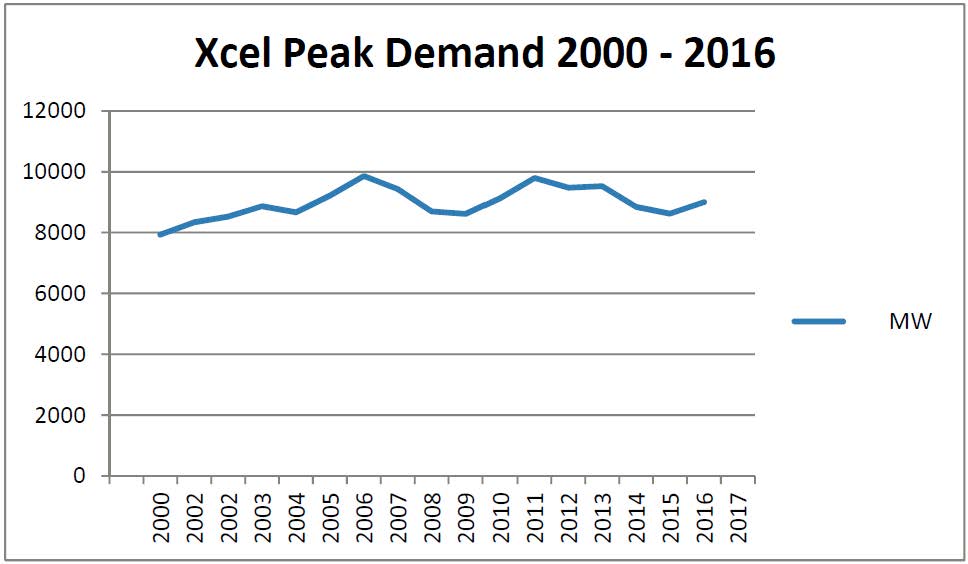
Xcel Energy has released its 2016 SEC 10-K, and here is the number I care most about, the peak demand, incorporated into the chart above:
![]()
“Peak Demand” is the number they use to attempt to justify “need” for all sorts of abhorrent and expensive infrastructure, particularly infrastructure of the transmission variety. Here are the specifics in megawatts (MW):
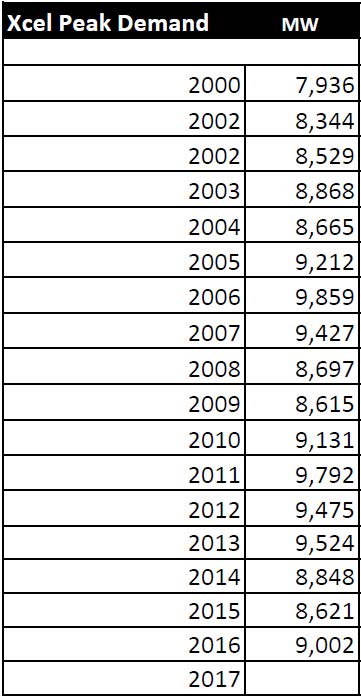
As Xcel Energy’s Ben Fowkes says, this is the “new normal.” From the Seeking Alpha transcript of the XEL Earnings Call, January 31, 2013.
Hence, they’re looking for other ways to make money, which they found in transmission, specifically CapX 2020 transmission, which was justified with this chart from MN Dept. of Commerce’s Steve Rakow, in his bar napkin depiction of the ups and down of peak demand:
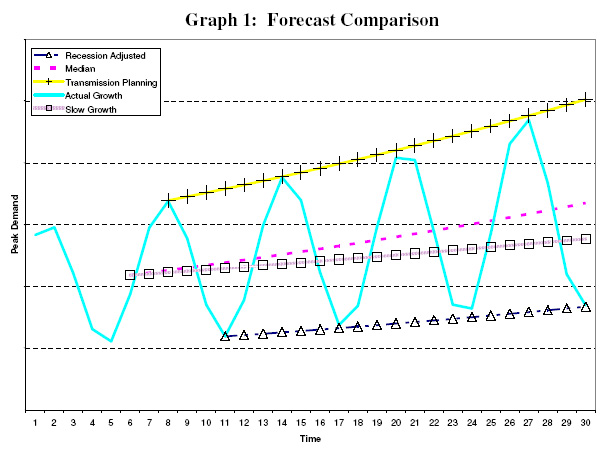
Compare this drunken-dream drawing with the actual peak demand above — doesn’t look at all similar, does it. Nevertheless, we’ve been stuck with over $2 billion in transmission infrastructure build-out which we’re just starting to pay for, and just starting to see show up in rate cases. People are just now starting to get a feel for the economic impact, as if the environmental and quality-of-life impact isn’t bad enough…


Meanwhile, after going through years and years over CapX 2020, followed by the MISO MVP 17 project portfolio, now under construction, MISO wants to spring another bunch of projects on us. Their “Transmission Overlay.” Yeah, right…
Here’s the list, in a spreadsheet:
This is the MN, WI, SD, ND and some IA wish list weeded out from that spreadsheet (click for a larger version):
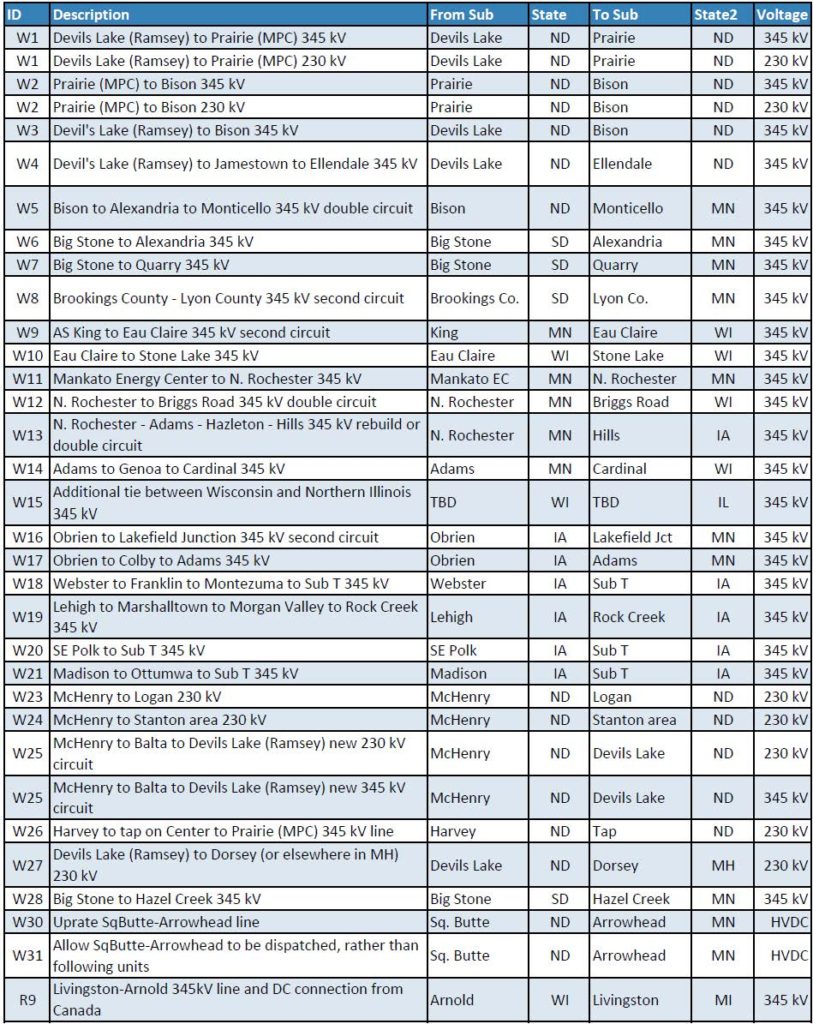
They want to add all of this, nevermind that Xcel is whining in its e21_Initiative that only 55% of the grid is not utilized:
(N) Identify and develop opportunities to reduce customer costs by improving overall grid efficiency. In Minnesota, the total electric system utilization is approximately 55 percent (average demand divided by peak demand), thus providing an opportunity to reduce system costs by better utilizing existing system assets (e.g., generation, wires, etc.). (e21_Initiative_Phase_I_Report, p. 11).
And they want to build more? MORE?!?!
And they want to ram it through even though it’s not needed, just like CapX 2020 transmission? As if Obama’s RRTT wasn’t enough, pushing CapX 2020 Hampton-La Crosse transmission line:
Obama “fast tracks” CapX Hampton-LaCrosse?!?!?!
… check out tRump’s Executive Order 13766:
Expediting Environmental Reviews and Approvals for High Priority Infrastructure Projects
GRRRRRRRRRRRR! As if there’s not enough work to do these days… but you know, the work never ends for us “paid protesters.” And a woman’s work is never done either.
Settlement? PUC says “show your work!”
August 29th, 2016
Xcel Energy’s rate case just received another interesting twist — a request of the PUC that the parties to the “settlement agreement” show their work! I love it when that happens.
PUC staff wants detailed information about how they reached the numbers they did, how the settlement relates to each of the parties initial positions and testimony, etc., to “show your work!” The PUC staff is requesting this information so that the Commission can determine whether to accept, modify, or reject the partial settlement agreement. And note that the parties are mostly those e21Participants who signed off on Xcel’s Exe21_Initiative scam.
GOOD! Take a close look, PUC!
To review the filings in this docket, go to this PUC SEARCH DOCUMENTS PAGE and search for docket “15-826.”
Speak Up at Xcel Energy Rate Case Public Hearing
July 24th, 2016
Wednesday, at 7 p.m. at SE Tech College in Red Wing, there’s a public hearing about the Xcel Energy rate case (PUC Docket 15-826 — to look at all the filings GO HERE TO PUC SEARCH PAGE and search for docket 15-826).
Here’s my LTE in the Red Wing Republican bEagle:
Letter: Speak up at Xcel rate case hearing
We’re conserving – why should we pay more? Why are residential rates higher than large energy users?
I pushed for a hearing in Red Wing at the prehearing conference, and it’s next Wednesday: Xcel Rate Case Public Hearing, 7 p.m., Minnesota State College Southeast.
Carol A. Overland
Red Wing

